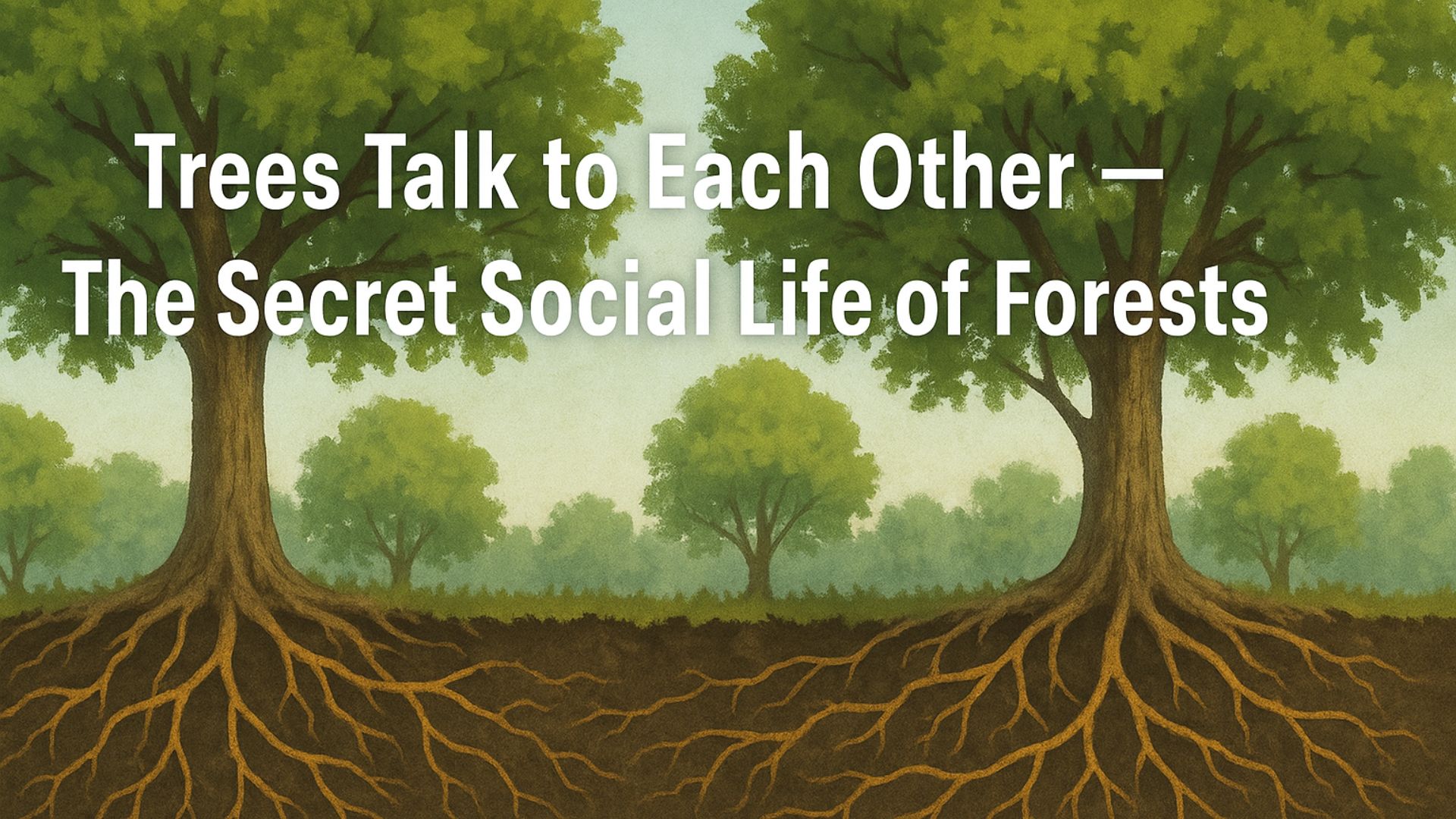Trees Talk to Each Other — The Secret Social Life of Forests
Trees Talk to Each Other — We often walk through forests assuming the trees are silent, passive entities. But science reveals a different truth: trees live in communities. They warn, feed, protect, and communicate with each other using an underground network so complex, scientists now call it the Wood Wide Web.
This discovery changes how we understand forests — not as isolated organisms, but as living social networks.
🍄 What Is the Wood Wide Web?
The “Wood Wide Web” refers to the symbiotic relationship between tree roots and mycorrhizal fungi.
- Mycorrhizae: Microscopic fungi that grow on tree roots.
- These fungi form vast networks underground, connecting tree roots over long distances.
- Through this network, trees exchange signals and nutrients, almost like how we use the internet.
Fungi take a small portion of sugar in exchange for enhancing nutrient absorption and enabling inter-tree communication.
🧪 How Do Trees Talk to Each Other —?
1. Nutrient Sharing
Older trees often send carbon, water, and nitrogen to younger or weaker trees, especially their offspring.
Example: A “mother tree” can support dozens of seedlings by channeling resources.
2. Danger Signals
When a tree is attacked by pests, it can release chemical warnings through roots and fungi to neighboring trees, triggering defensive responses like:
- Producing bitter chemicals
- Changing leaf composition
3. Stress & Disease Management
Trees under drought, disease, or environmental stress can signal distress, allowing others to prepare or reduce resource flow to the affected member.
Must Read: Joan Clarke—The Forgotten Codebreaker Who Helped Win World War II
🌍 What Happens if the Network Is Broken?
When large trees are removed (especially mother trees), the network collapses, affecting:
- Soil health
- Seedling survival
- Forest resilience
This is why clear-cutting forests damages far more than the visible trees — it severs the communication and support systems.
🧬 Scientific Proof & Studies
- In a landmark study, trees labeled with radioactive carbon passed it to neighboring trees through fungi.
- Forests with rich fungal networks were found to be healthier and more resistant to climate change.
Key Researchers:
- Dr. Suzanne Simard (University of British Columbia) – pioneer of mother tree theory.
- Peter Wohlleben – author of The Hidden Life of Trees, widely popularizing the science.
🌳 Philosophical & Environmental Implications
- Forests are not just carbon sinks, but intelligent ecological systems.
- We must rethink logging, development, and even how we grow urban forests.
- Sustainable forestry now includes leaving mother trees intact and nurturing fungal health.
🧠 Fun Fact:
- Mycorrhizal networks can connect trees across species, meaning an oak could “talk” to a pine.







